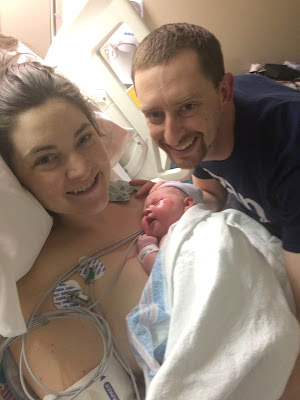I’ve been thinking a lot this week about the forces and ideas that form us. These are the values that reside deep in our hearts that seemingly lack origin, the ideas that we didn’t realize were shaping us. Combined, these ideas and values cover us in invisible fingerprints, fingerprints that can only be seen when particular circumstances cast a new light on them.
I’ve had several instances in my life where I’ve uncovered these invisible fingerprints.
Most recently, however, I noticed the invisible fingerprints of formation connected to my teaching. This year I’ve been given the privilege of piloting a service learning program in our Sophomore Theology class. It’s the perfect combination of everything I love about Catholic, Jesuit education: an opportunity to get to know students in the classroom; a chance to volunteer side by side with students, modeling faith in action; and a way to implement continual and (hopefully) meaningful reflection. With all these benefits, it’s not hard to believe that I started the year flying high.
But two weeks ago we hit a rough patch. I had a group of students who demonstrated a disappointing lack of maturity at a service site, I watched other groups of students struggle and even seemingly refuse to engage at other sites, and when I created a space for open feedback at the end of the first quarter, close to 1/5 of my students asked some form of the question “why are we doing this?” or “what does this have to do with Theology?”
I was crushed. I had tried so hard to create a space where students could find God in their work with the world and it seemed I had missed the mark.
Disheartened, I went back to the beginning, to the mission statement I’d shared with students at the start of the year.
In the sophomore Theology course at Saint Martin students will explore their call to the creation of a more just world through the formation of loving relationships. As part of his/her Theology class, each sophomore will participate in a continual process of action and reflection that combines volunteering in the community with theological content learned in the classroom. This form of community-based learning promotes kinship and solidarity between students and the communities and sites where they spend time. This experience in the community is aimed at helping each sophomore grow as both a student and a person of faith and is meant to instill an awareness of his/her responsibility to work for justice and transform urban Cleveland.
We hope that this cycle of action and reflection becomes a way of life for our students as they become men and women for others.2
Although a better Theology teacher might have gone first to the Bible, starting with Jesus to explain to students why serving the “least of our brothers and sisters” was, in fact, deeply theological, I accessed these ideas (I realize now) in the way that I learned them, in Jesuit texts. I pulled four partial texts for my students: the Saint Martin de Porres High School Founding Curriculum, “What Makes A Jesuit School Jesuit?”, Pedro Arrupe’s Speech “Men and Women for Others” and an article by Dean Brackley, SJ called “The Challenge of the UCA.”
I can’t explain what inspired me to start with these particular texts other than, well, God, but what I found there were the words from my mission statement, words and ideas that had been ingrained into my person, my soul, and my being without my awareness. Once again, I found myself reflected back at me and I recognized the invisible fingerprints of formation.
What I learned, however, was how incredibly satisfying, and even powerful, to put a language to myself, to the person I am. And on top of all that, discovering these fingerprints brought me to a deep awareness of and gratitude for the institutions that have shaped me, the people who have loved me and for the God who has guided me, leaving her prints on my being.
1 It seems important to mention here that I was not a life-long ND aficionado. I knew little of the University before I set foot on Campus in 2005. In fact, during Freshman Orientation, I found myself a definite outside when we sang the fight song for the first time - I had never heard the song before in my life.↩
2 A quick caveat: The fingerprints on this piece of my curriculum are not so invisible. The Mission Statement was *just slightly* adapted from the language used by my last school (Xavier College Prep) in connection to their Junior Praxis Project. Thanks Xavier for making me look good!
↩



No comments:
Post a Comment